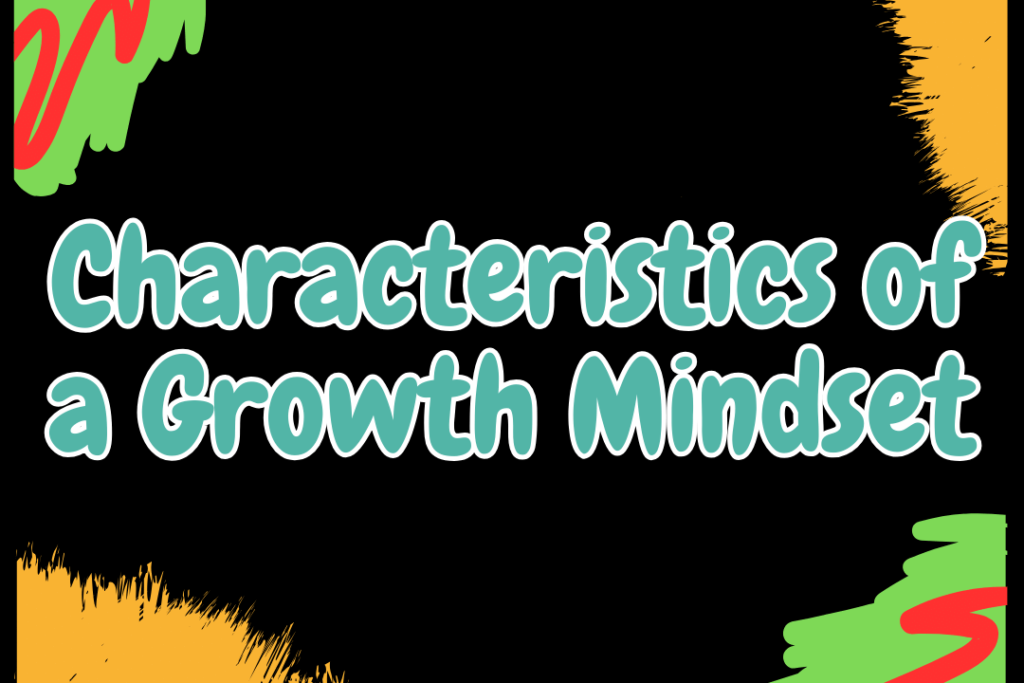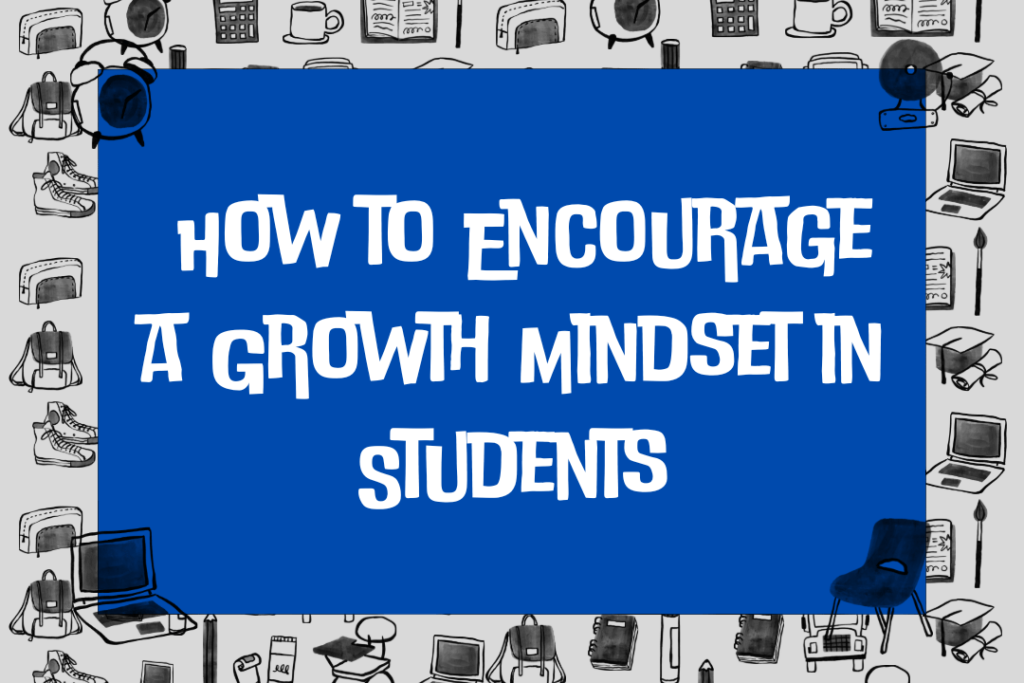How Students with a Growth Mindset See Their Mistakes In education, mindset plays a crucial role in shaping students’ attitudes toward learning and their response to challenges. A growth mindset, as opposed to a fixed mindset, empowers students to embrace mistakes as opportunities for growth and improvement.
Read More Articles:
Montessori Education vs. Traditional Education:
What is the Easiest Language to Learn? A Guide for Beginners
Characteristics of a Growth Mindset
Individuals with a growth mindset exhibit the following characteristics:
- Belief in Intelligence as Malleable: They believe that intelligence can be developed and improved through Effort and perseverance.
- Embrace Challenges: They view challenges as opportunities for growth and learning rather than as obstacles to be avoided.
- Learn from Mistakes: They see mistakes as valuable feedback and learning experiences rather than as failures.
- Seek Feedback: They actively seek feedback from others to identify areas for improvement.
- Persist in the Face of Setbacks: They are resilient and persistent in the face of setbacks and failures, viewing them as temporary obstacles on the path to growth.
- Attribute Success to Effort: They attribute their successes to hard work and Effort rather than innate ability or luck.
- Focus on Improvement: They are driven by a desire to improve and grow rather than by a need for external validation or recognition.
- Value the Learning Process: They enjoy the learning process and are intrinsically motivated to acquire new knowledge and skills.
- Embrace Criticism: They welcome constructive criticism as an opportunity to learn and grow.
- See EffortEffort as a Path to Mastery: They believe that consistent Effort and dedication can lead to mastery in any domain.
In contrast, individuals with a fixed mindset exhibit the following characteristics:
- Believe that intelligence is fixed and cannot be changed.
- Avoid challenges and prefer to stick to familiar tasks.
- See mistakes as failures and avoid them at all costs.
- Ignore feedback or see it as a personal attack.
- Give up easily when faced with setbacks.
- Attribute success to innate ability or luck.
- Focus on proving their worth and seeking external validation.
- Dislike learning and see it as a chore.
- Resist criticism and see it as a threat to their self-esteem.
- Believe that Effort is futile and will not lead to improvement.
How Students with a Growth Mindset See Mistakes
Students with a growth mindset view mistakes as valuable learning opportunities. They understand that mistakes are a natural part of the learning process and that everyone makes mistakes. They view mistakes as a chance to learn from their errors and improve their understanding.
Examples of How Students with a Growth Mindset View Mistakes
Here are some examples of how students with a growth mindset might view mistakes:
- A student who makes a mistake on a math test might not see it as a failure but rather as an opportunity to learn from their error and improve their understanding of the concepts being tested. They might analyze their mistake to identify what they did wrong and then focus on practicing that concept until they master it.
- A student who struggles with writing might view their mistakes as an opportunity to improve their writing skills. They might seek feedback from their teacher or a peer and then practice writing regularly to enhance their skills.
- A student who gets a low grade on a science test might view it as an opportunity to learn more about the subject. They might ask their teacher for extra help or study the material more thoroughly to improve their understanding.
- A student who makes a mistake in a sports game might view it as an opportunity to learn from their error and improve their skills. They might practice the skill more or seek coaching to improve their performance.
Benefits of a Growth Mindset
Individuals with a growth mindset reap numerous benefits, including:
- Increased resilience: They are better equipped to handle setbacks and challenges, as they view them as opportunities for growth and learning.
- Improved academic performance: They are more likely to engage in deep learning and achieve higher educational outcomes, as they believe in their ability to improve through Effort.
- Enhanced motivation: They are intrinsically motivated to learn and grow, as they value the process of learning over the outcome.
- Positive self-image: They develop a positive self-image based on their Effort and progress rather than on their innate abilities.
- Greater creativity and innovation: They are more likely to take risks and explore new ideas, as they believe that their abilities can be developed.
- Improved relationships: They are more likely to seek feedback and collaborate with others, as they value the opportunity to learn and grow from others.
- Increased success in various domains: A growth mindset has been linked to success in academic settings, careers, sports, and personal life.
Overall, a growth mindset empowers individuals to embrace challenges, learn from their mistakes, and achieve their full potential.
How to Encourage a Growth Mindset in Students
Educators play a crucial role in fostering a growth mindset in their students. Here are some strategies to encourage a growth mindset in the classroom:
- Praise effort and perseverance: Recognize and reward students for their hard work and dedication, regardless of the outcome. Emphasize that Effort and persistence are more important than innate ability.
- Provide constructive feedback: Offer specific and actionable feedback that helps students identify areas for improvement. Encourage students to see feedback as an opportunity to learn and grow.
- Create a safe learning environment: Establish a classroom culture where students feel comfortable taking risks and making mistakes. Avoid creating an environment where students are afraid to ask questions or make errors.
- Model a growth mindset: Demonstrate a growth mindset by acknowledging your own mistakes and sharing how you learn from them. Show students that you believe in their ability to improve.
- Please encourage students to reflect on their learning: Ask students to reflect on their progress and identify areas where they have grown. This helps them develop a sense of ownership over their learning and reinforces the idea that they can improve.
- Use growth mindset language: Use language that promotes a growth mindset, such as “I can’t do it yet, but I’m learning” or “Mistakes help me learn.”
- Celebrate diversity: Encourage students to value diversity and learn from their peers. Emphasize that everyone has different strengths and weaknesses and that we can all learn from each other.
- Involve parents and caregivers: Collaborate with parents and caregivers to reinforce the growth mindset at home. Please encourage them to praise their children’s Effort and perseverance and model a growth mindset for themselves.
By implementing these strategies, educators can create a learning environment that fosters a growth mindset in students. This will empower students to embrace challenges, learn from their mistakes, and achieve their full potential.
FAQ: How Students with a Growth Mindset See Their Mistakes
Q: What is a growth mindset?
A: A growth mindset is the belief that intelligence can be developed through Effort and hard work. Students with a growth mindset believe that they can improve their abilities through learning and practice.
Q: How do students with a growth mindset see their mistakes?
A: Students with a growth mindset see their mistakes as opportunities for learning and growth. They understand that making mistakes is an inherent part of the learning process and that it is through mistakes that we learn and grow.
Q: What are some of the benefits of having a growth mindset?
A: Students with a growth mindset are more likely to:
- Take risks and try new things
- Persist in the face of challenges
- Seek out feedback and criticism
- Achieve greater academic success
Q: How can I help my child develop a growth mindset?
A: Here are some tips for helping your child develop a growth mindset:
- Praise your child for their Effort and hard work, not just their intelligence.
- Encourage your child to take risks and try new things.
- Provide your child with constructive feedback and criticism.
- Please help your child to develop realistic goals and to celebrate their progress.
Q: What are some examples of growth mindset statements?
A: Here are some examples of growth mindset statements:
- “I can’t do this yet, but I’m going to keep trying.”
- “Mistakes are okay. They help me learn.”
- “I’m not afraid to ask for help.”
- “I’m proud of myself for trying my best.”
By helping your child develop a growth mindset, you can help them reach their full potential and achieve success in all areas of life.
Conclusion: How Students with a Growth Mindset See Their Mistakes
This study has explored the perspectives of students with a growth mindset on their mistakes. The findings reveal that students with a growth mindset view mistakes as opportunities for learning and growth. They understand that mistakes are an inherent part of the learning process and that making mistakes is not a sign of failure but rather an indication of progress.
Students with a growth mindset believe that their abilities can be developed through Effort and hard work. They are willing to take risks and try new things, even if they are afraid of making mistakes. They also seek feedback and criticism to improve their understanding and skills.
In contrast, students with a fixed mindset believe that their abilities are fixed and cannot be changed. They are afraid of making mistakes and avoid taking risks. They also tend to give up easily when faced with challenges.
The findings of this study have important implications for education. By fostering a growth mindset in students, educators can help them to develop a more positive attitude toward learning and to achieve tremendous academic success.
Here are some specific ways that educators can foster a growth mindset in their students:
- Praise students for their Effort and hard work, not just their intelligence.
- Encourage students to take risks and try new things.
- Provide students with constructive feedback and criticism.
- Help students to develop realistic goals and to celebrate their progress.
By creating a supportive learning environment that values Effort and perseverance, educators can help students develop a growth mindset and reach their full potential.


